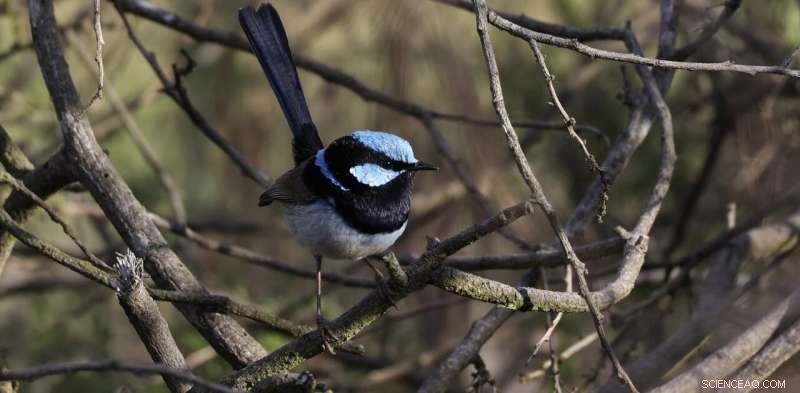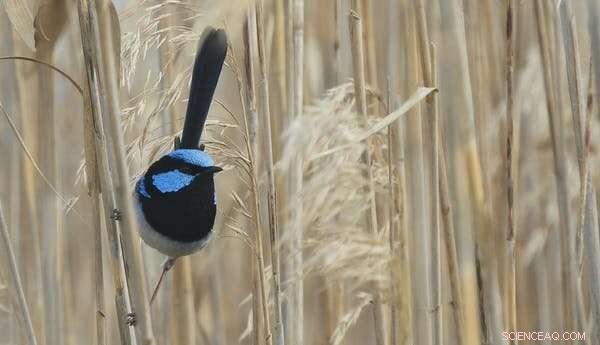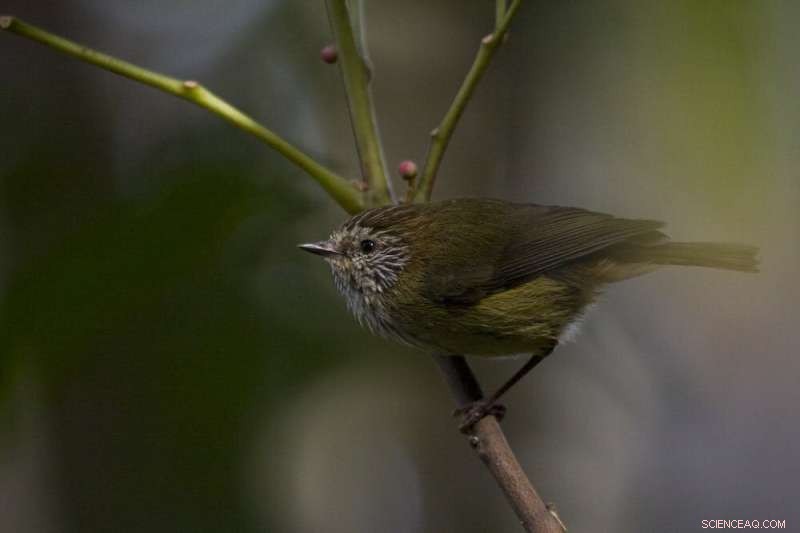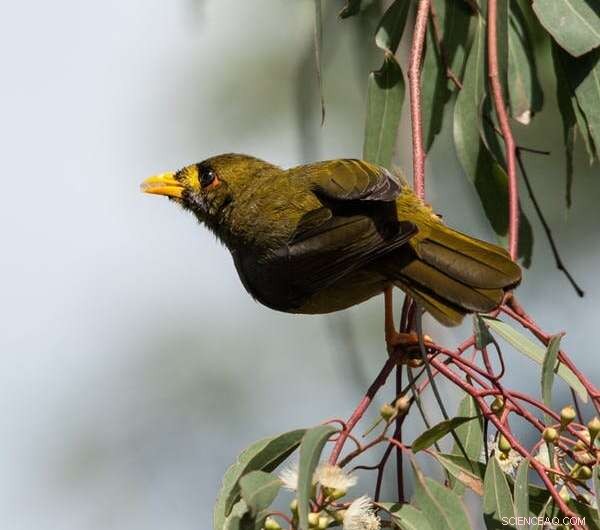
Kredit:Kaspar Delhey, författare tillhandahållen
Ett mysterium många biologer vill lösa är hur komplexiteten utvecklas i naturen. Och bland de många sociala systemen i den naturliga världen utmärker sig flernivåsamhällen för sin komplexitet. Individer organiserar sig först i familjer, som är medlemmar i band, som är organiserade i klaner.
På varje nivå är associationer mellan komponenter (individer, familjer och klaner) strukturerade och stabila. Med andra ord, individer inom familjer stannar vanligtvis tillsammans, och familjer interagerar vanligtvis med andra specifika familjer på ett förutsägbart sätt, för att bilda stabila klaner.
En sådan social organisation har förmodligen präglat mycket av mänsklig evolution (och är fortfarande vanlig bland många jägare-samlare-samhällen runt om i världen).
Faktum är att samhällen på flera nivåer sannolikt spelade en grundläggande roll i mänsklighetens historia, genom att påskynda vår kulturella utveckling. Att organisera sig i distinkta sociala grupper skulle ha minskat överföringen av kulturer och gjort det möjligt för flera traditioner att samexistera.
I vår forskning, publicerad idag i Ecology Letters, studerade vi sociala beteenden i en vild population av fantastiska älvor. Vi fann att dessa fåglar också organiserar sig i samhällen på flera nivåer - en komplexitetsnivå som en gång troddes vara exklusiv för däggdjur med stor hjärna.
Fåglar i samarbete
Även om vi har idéer om fördelarna med flernivåsamhällen vet vi relativt lite om hur och varför de bildas i första hand.

Hanar av fantastiska älvor märks på grund av sin briljanta blåa häckande fjäderdräkt.
Av de få arter som är kända för att leva i samhällen på flera nivåer, finns det en egenskap som delas av alla. Det vill säga, de lever i stabila grupper, i miljöer där tillgången på mat är inkonsekvent och svår att förutsäga.
Detta är också sant för många fåglar som föder upp kooperativt, inklusive den fantastiska älvgräsen – som är bekant över sydöstra Australiens parker och trädgårdar. De föder upp i små familjegrupper, med hjälpare som inte är avelande som hjälper ett dominerande häckande par. Och detta sociala system är vanligt bland australiska fågelarter.
The superb fairy-wren is a well-studied species and is beloved by Australians, even being crowned bird of the year in this year's Guardian/BirdLife Australia poll.
These birds are notorious for their polyamorous approach to sex, despite being socially monogamous. Breeding pairs form exclusive social bonds, yet each partner will still mate with other individuals.
Our work now reveals this complex arrangement during the breeding season is just the tip of the iceberg.
Associating by choice
We tracked almost 200 birds over two years, by attaching different-colored leg bands to each individual. We recorded the birds' social associations and, from our observations, built a complex social network that let us determine the strength of each relationship.

Striated thornbills form larger flocks outside of breeding season. Credit:Kaspar Delhey
We found that during the autumn and winter months, some breeding groups – (which include the breeding pair, one or more helpers and last summer's offspring), stably associated with other breeding groups to form supergroups. And this was usually done with individuals they were genetically related with.
In turn, these supergroups associated with other supergroups and breeding groups on a daily basis, forming large communities. In the following spring, these communities split back into the original breeding groups inhabiting well-defined territories—only to join again next winter.
Just like humans, these little birds don't associate with each other randomly during the long winter months. They have specific individuals and/or groups they choose to be with (but we're currently not sure how they make this choice).
While it's not yet clear why superb fairy-wrens form upper social units (supergroups and communities), we suspect this might allow individuals to exploit larger areas during winter, when food is scarce. It would also provide additional safety against predators, such as hawks and kookaburras.
This theory is supported by our literature study, which shows that multilevel societies are likely common among other Australian cooperatively breeding birds, such as the noisy and bell miners and striated thornbills.
Cooperative breeding is another strategy to deal with harsh condition such as food scarcity. So the conditions that favor cooperative breeding are the same as those that favor multilevel societies.

The bell miner is endemic to south-eastern Australia. Credit:Kaspar Delhey
Multilevel societies in other animals
There are several other species which seem to have a similar social organization. They include primates such as baboons, and other large mammals that exhibit rich animal cultures, such as killer whales, sperm whales and elephants.
For a long time, researchers thought living in complex societies might be how humans evolved large brains. They also thought this characteristic may be exclusive to mammals with large brains, since keeping track of many different social relationships is not easy (or so the reasoning went).
Consequently, other animals with whom we are less closely related have mostly been excluded from this field of investigation.
This might reflect a bias that we, humans, have towards our own species and species which are similar to us.
As it turns, you don't need to be a mammal with a big brain to evolve complex multilevel societies. Even small-brained birds such as the tiny superb fairy-wren can do this—as well as the vulturine guineafowl a chicken-like bird from northeast Africa.
We strongly suspect quite a few birds will join their ranks in the coming years as more research is done.